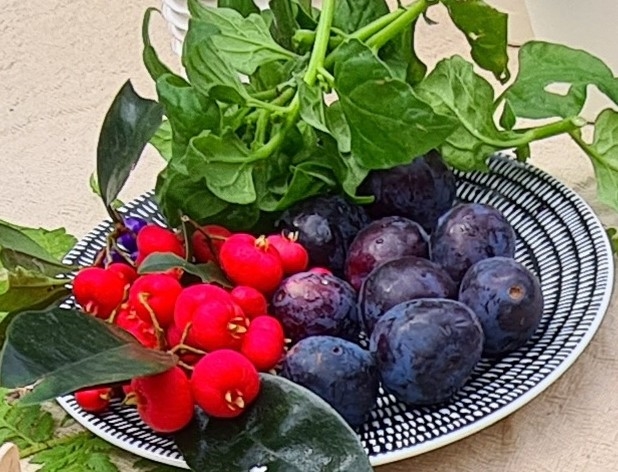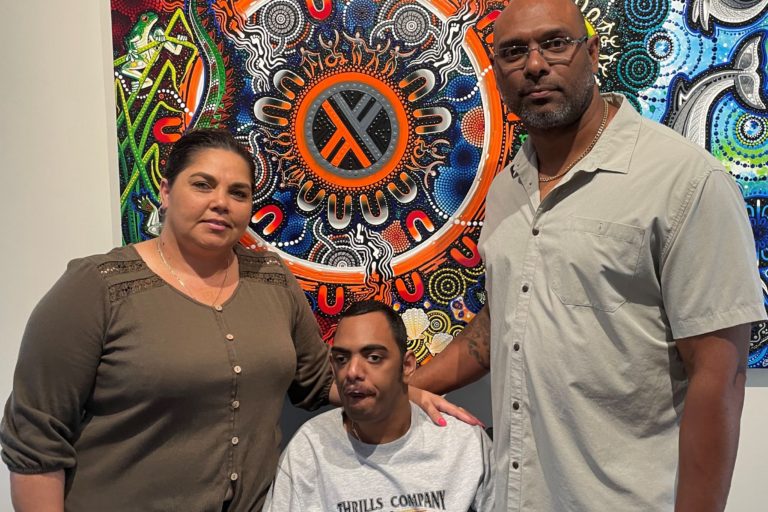By Neena Bhandari
Sydney, 24.05.2011 (IPS): From the Australian bush to Alaska’s Arctic wilderness, indigenous peoples’ stories and perspectives take centre stage at the Message Sticks Film Festival, the only annual event of its kind in Australia.
Message Sticks opened at the Sydney Opera House on May 13 and tours nationally until August 24, through remote Aboriginal communities in the towns of Broome, Townsville, Cairns, Alice Springs and Yirrkala, besides screening to mainstream audiences in state and territory capitals.
“The festival has grown in terms of audience and the quality of works,” said Australian indigenous film and documentary director Rachel Perkins.
“The pool of indigenous filmmakers has also grown with more access to targeted programmes for skills development. This, coupled with the means of production becoming more economically viable, has meant that there is more content to draw from,” Perkins, who has been the festival curator for the past 12 years, told IPS.
A decade ago it was difficult to get an audience for an indigenous film, but interest in contemporary indigenous stories has grown substantially.
In the 1970s, there were no feature films with an indigenous Australian in a key creative role. But the first decade of the 2000s has seen indigenous filmmakers contribute to nine features and 16 TV dramas, according to Screen Australia’s The Black List, which catalogues the work of 257 indigenous Australians on a total of 674 screen productions.
The Sydney Opera House started Message Sticks in 2000 to commemorate “Sorry Day,” a tribute to the so-called Stolen Generations—tens of thousands of indigenous children forcibly taken from their families between 1900 and 1970 under the Government Assimilation Policies to “breed out” Aborigine blood and supposedly provide them a better life.
Although Message Sticks began in this context, Perkins said, it is now a niche festival showing the best indigenous films from around the world.
A stand out film at this year’s event has been “On the Ice” by Andrew Okpeaha MacLean. It won the Crystal Bear for 14plus and Best First Feature at Berlin, and demonstrates a filmmaker working at the top of his craft with an appreciation of storytelling, but strongly grounded in the indigenous and very contemporary world of filmmaking.
Growing up in Barrow, an Iñupiaq (Eskimo) village in Arctic Alaska, MacLean said, “My film is set in the aftermath of a murder and explores themes of morality. Even if one escapes, there is no real way of getting away from the crime, which ripples out into the community and impacts people on the periphery. In our village of about 4,000 people, everybody knows everyone so crime in the village, unlike in a big city, is not anonymous or impersonal.”
The film is an extension of a short film MacLean made in 2008 called “Sikumi,” which won the Sundance Film Festival Jury Prize in Short Filmmaking that year.
While technology is making it easier for indigenous films to reach out to a global audience, MacLean, who has a Masters degree from the New York University Graduate film school, said, “For small independent films with no great stars, there is no government funding and it is difficult to raise funds. It took three years from script to screen.”
The festival opened in Sydney and Melbourne with Australian indigenous writer and director Beck Cole’s debut feature “Here I Am”, which tells the story of a young woman’s difficult journey reconnecting with her mother and daughter after being released from prison.
Karen, the central character in the film, faces the difficult truth that shame is a powerful force, and sometimes the most important person to forgive is oneself. “It was my desire to tell a story about a family of women trying to mend itself and to give audience an opportunity to enter a world they otherwise might not know about,” Cole told IPS.
Aboriginal adults, who comprise almost two per cent of Australia’s total adult population, make up over 25 percent of prisoners, and Cole is hoping her film would help many of these adults forgive themselves and reconnect with family and society.
According to the 2006 Census, Australian Aboriginal and Torres Strait islanders comprise only 2.5 per cent or 517,000 of the country’s 22 million population. They have been one of the most marginalised populations in the developed world.
But their identity is evolving, said Perkins. “In the most positive sense, it is defined by having a consciousness about the original culture of Australia and an identification and connection with that heritage, whilst also embracing the experience of living in a contemporary Australian society.”
Actress, writer and director Pauline Whyman, who hosts the festival tour, told IPS, “Message Sticks films often have the effect of drawing you from the sheer diversity of the story telling and the breadth of talent the filmmakers share that brings excellence in filmmaking to the world.”
In recent years indigenous filmmakers have achieved both critical and commercial acclaim. “Filmmakers have developed their skills over time. We are seeing filmmakers graduate from short form works to narrative movies. This has meant we have a wider variety of dramatic works to choose from,” Perkins told IPS.
The other films that premiered at Message Sticks include Native American director Billy Luther’s “Grab,” an intimate portrayal of Grab Day in the villages of the Laguna Pueblo tribe in New Mexico; Mexican director Carlos Pérez Rojas’s “And the River Flows On,” about the conflict between the Mexican government and the indigenous communities threatened by the La Parota hydro-electric dam on Papagayo River in Guerrero state; and Australian director Ivan Sen’s “Shifting Shelter 4” which follows the lives of four young Aboriginal teenagers dealing with the harsh realities of life and raising their own families.
Perkins said government has committed to supporting indigenous cinema as its contribution to Australian culture. “The immediate challenge is that demand for quality indigenous content has increased, so we must now focus on identifying and supporting new indigenous talent to take up this opportunity”, she said.
© Copyright Neena Bhandari. All rights reserved. Republication, copying or using information from neenabhandari.com content is expressly prohibited without the permission of the writer and the media outlet syndicating or publishing the article.


